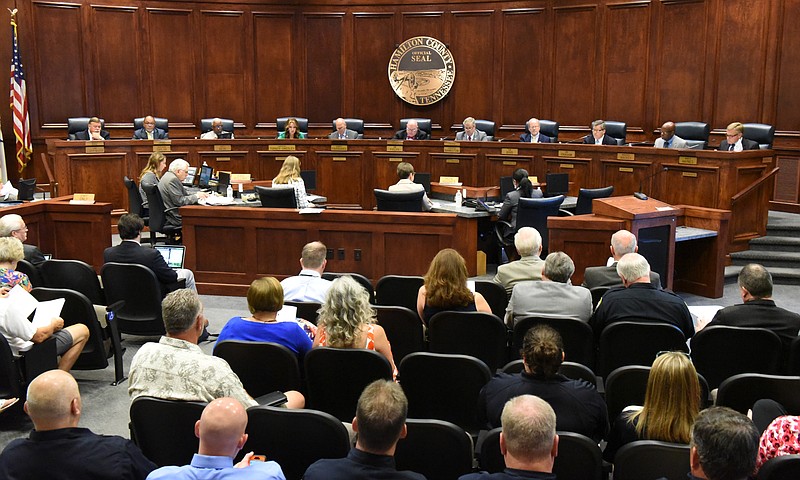Passage of an early retirement plan for Hamilton County sheriff's officers got a standing ovation for county commissioners on Wednesday.
Now comes figuring out how to pay for it.
Commissioners voted 8-3 to adopt the so-called "bridge plan," which allows officers to retire at age 55 with a significant compensation bump that lasts until they turn 62 and can begin collecting Social Security.
The idea is to move aging officers out of a physically demanding job to make room for younger ones, said Sheriff Jim Hammond, standing amid a sea of uniformed deputies in the commission chambers.
Hammond said policing is a young person's profession, requiring strength, agility and fast reflexes. The bridge plan "allows the men and women of law enforcement who are certified to retire with dignity," he said.
"These are the men and women who stand in the gap every day and fight the fight between good and evil," he said.
Commissioners supporting the plan - Randy Fairbanks, Marty Haynes, Warren Mackey, Sabrena Turner-Smedley and Chairman Chester Bankston - said it is a fair way to reward people who do a dangerous job.
"Basically it comes down to what your priorities are - who do you appreciate enough to take care of them," said Fairbanks.
Three commissioners who voted no - Tim Boyd, Joe Graham and Jim Fields - had reservations about how to pay for the plan. The initial cost will be about $350,000 a year. Only commissioned officers - those who can carry weapons - will be eligible. Expanding eligibility to other officers, such as park rangers and jailers, would multiply the cost.
Boyd called it an "unfunded mandate" that represents a 40-year, $8 million to $10 million commitment with no dedicated funding source. Many of his 44,000 constituents are on fixed incomes, he said, and if the program's cost rise, their taxes might, too.
"I can't convince myself that it is fair for my constituents," Boyd said.
Fields and Graham also were uneasy that the benefit doesn't have a dedicated funding source.
"I've talked to my fellow commissioners up here and none of them are in favor of a tax increase," Fields said. He made a motion to delay voting on the plan until the funding source is identified, but that failed on a 5-3 vote, and commissioners then voted to adopt the plan. Commissioner Greg Beck was absent.
County Mayor Jim Coppinger said he expects to cover the added cost from growth in county revenue in the upcoming 2016-17 budget.
He said the county is hoping for about $2 million in new revenue, although "there's always some uncertainty as to how much that growth will be."
Contact staff writer Judy Walton at jwalton@timesfreepress.com or 423-757-6416.
